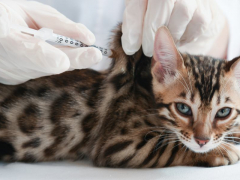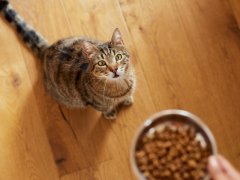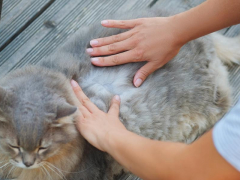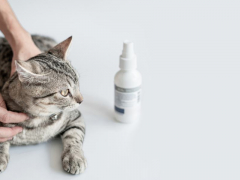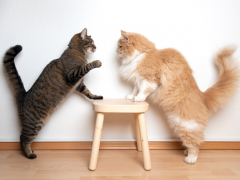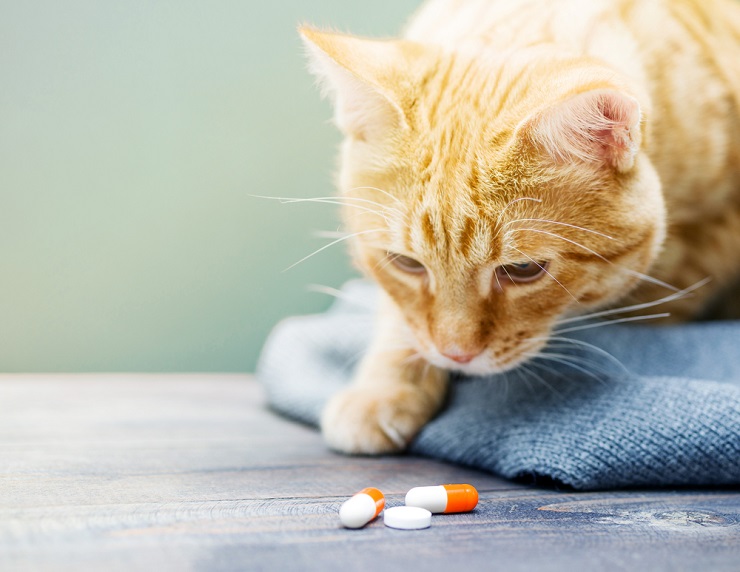
Gabapentin is a common medication used in both pets and people to address certain painful conditions and as added control for seizure conditions. In pets, it is also often used for mild sedation for stressful situations and for car travel, especially in cats.
Gabapentin for Cats Overview

So can cats take gabapentin? They sure can! In this article, you’ll learn what gabapentin is, how it works, and some safety guidelines regarding dosage for kitties. We’ll also cover some frequently asked questions.
What Is Gabapentin?
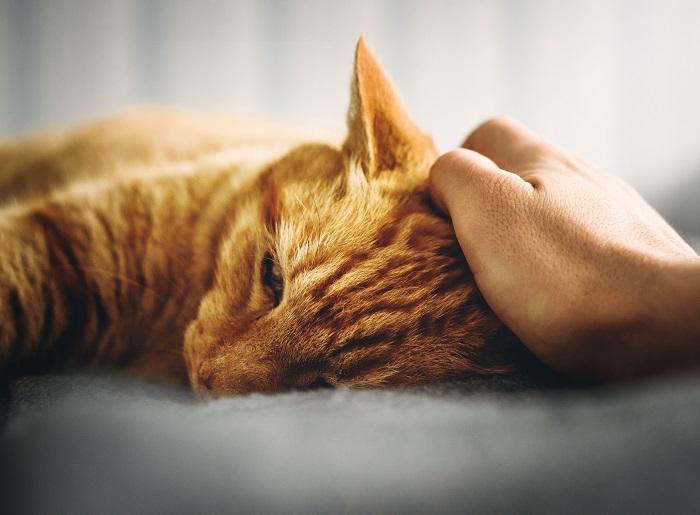
Gabapentin is a medication kind of in a class by itself, classified as an anticonvulsant neuropathic pain analgesic. True to its classification, it has a couple of different indications.
Its most common use in pets is as a pain medication, especially for neuropathic pain. Neuropathic pain is described by humans who experience it as a shooting or burning pain. Neuropathic pain is most often associated with nerves or the nervous system.
While not a good medication for seizures on its own in pets, it may be added on as adjunctive therapy for difficult to control seizure conditions.
The most common brand name for gabapentin is Neurontin, but it does come in generic forms as well.
What Does Gabapentin Do for Cats?
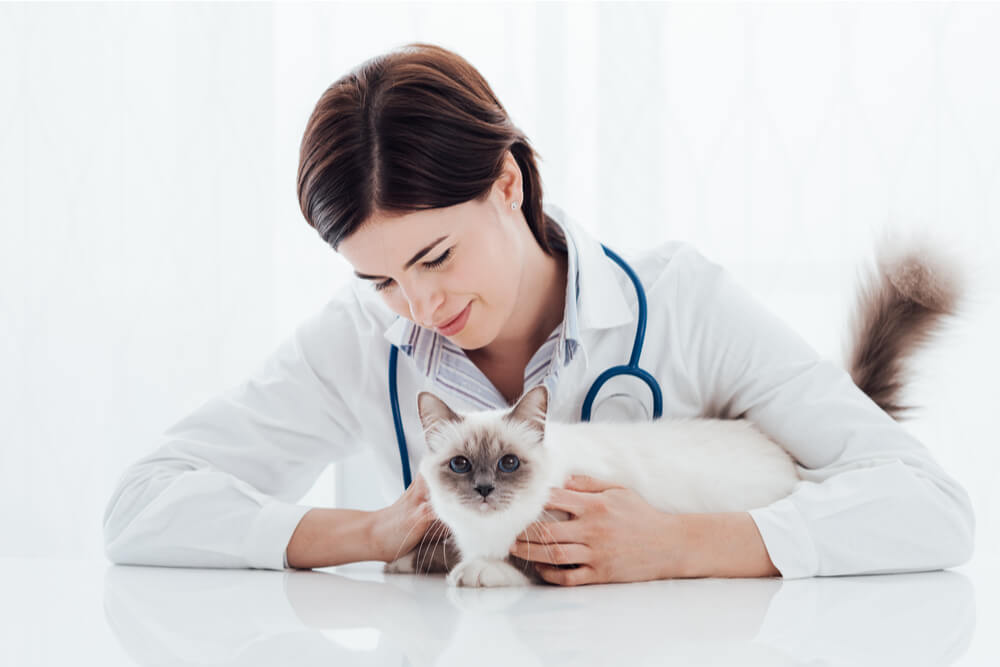
Gabapentin is used as a pain medication for chronic pain and, sometimes, to help calm down frightened cats.
In cats, gabapentin is most often used as a pain medication for chronic pain, such as from arthritis.
Gabapentin has also been recognized to be beneficial in reducing the fear responses that a kitty may have to the stress of handling and being examined at the vet.
It’s common for vets to prescribe a single dose of it to be given a couple of hours prior to veterinary visits to provide some sedation and help examination and handling to be less stressful for certain patients.
Anecdotally, it also appears to help keep some cats much calmer for car or plane travel and may be recommended to help make longer trips less stressful.
Studies have not shown gabapentin to be as effective for acute pain in cats as some other medications like buprenorphine, and so it is less commonly prescribed for a sudden onset of a painful condition, or after surgery.
Gabapentin Side Effects in Cats
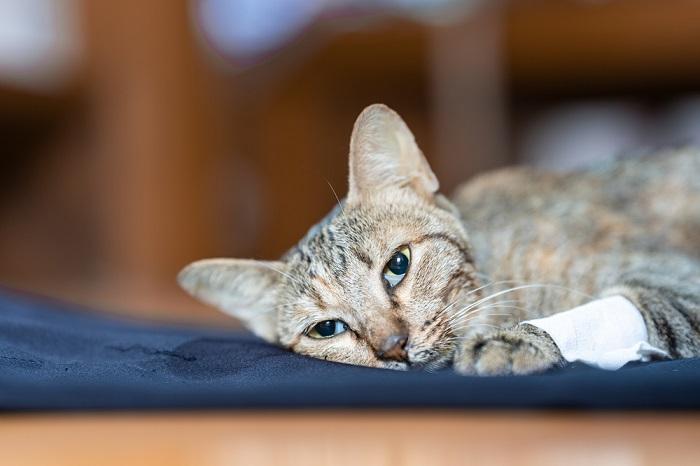
The most common side effects seen in cats with gabapentin are lethargy and abnormal walking/movement, which is called ataxia. It is important to note that some of these effects may be expected or even desired when gabapentin is used intentionally as a sedative. Effects typically start to wear off within 12 hours.
Gabapentin should be used cautiously in cats with liver or kidney disease, as we may see it take longer for the effects to wear off. Its use should typically be avoided in pregnant queens.
Gabapentin Dosage for Cats
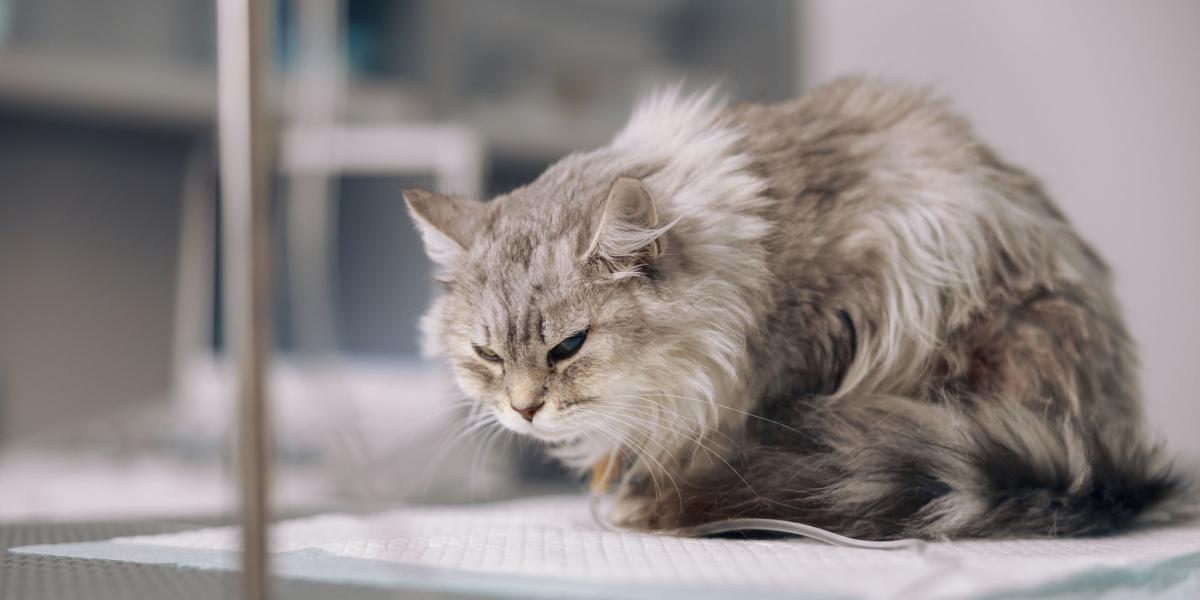
The dosage for gabapentin may vary depending on a cat’s size, as well as whether it’s being used as a pain medication, adjunctive anticonvulsant, or as a sedative before vet visits or travel.
From a safety perspective, a gabapentin dosage for cats will typically not exceed 50-100mg per cat to address pain or when being used as a sedative.
As a sedative, it is often given a couple of hours prior to an examination at the vet clinic or before getting in the car or on a plane.
Many vets feel that the sedative effect is better when an additional dose is given 24 hours prior (followed by the second dose closer to the vet visit or travel). As a pain medication, it is most often given every 12 hours to start, but may be increased to every 8 hours if needed.
These are just general guidelines, and it is very important to follow your veterinarian’s recommendations very specifically for the most effective and safe use of this medication.
Dosage Forms of Gabapentin
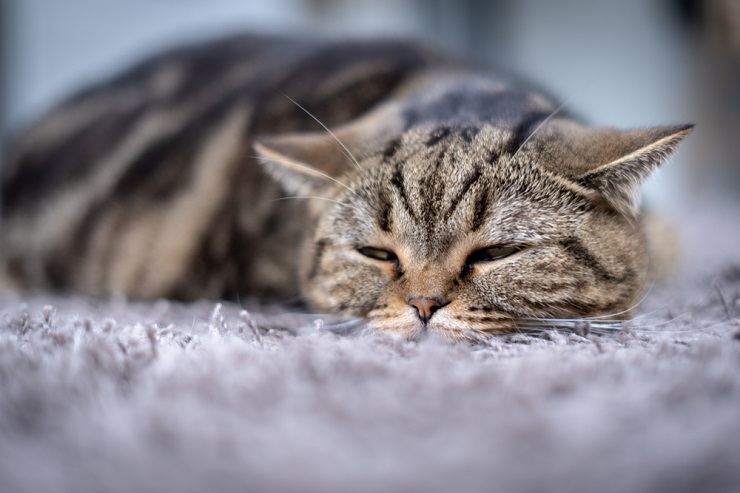
There is no specific veterinary form of gabapentin for pets, and it is always the human medication form that is used in an extra-label or off-label manner, which is common in veterinary medicine.
The most common form of gabapentin is a capsule containing powder, with the prescribed amount mixed with canned or soft food.
The 100mg capsule is the most common size prescribed for cats. Gabapentin also comes in a 50mg/ml liquid form that does require refrigeration.
The commercial liquid form may contain the artificial sweetener xylitol. While not toxic to cats, xylitol is toxic to dogs, so be careful with this form if there’s a pup in your home.
To make dosing easier, especially for smaller cats, gabapentin can also be ordered as a compounded medication in different forms by your veterinarian.
How Does Gabapentin Work?
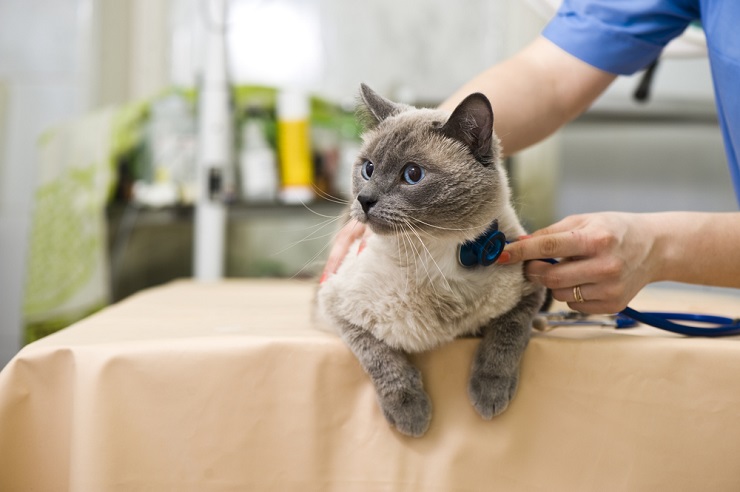
It’s not clear exactly how this unique medication works, but it appears to inhibit the release of certain excitatory neurotransmitters.
Gabapentin is a unique medication and its mechanism of action as both a pain medication, sedative, and as an add-on drug for seizures, is not completely understood. It is thought that it binds to a subunit of calcium channels, inhibiting the release of excitatory neurotransmitters like substance P, glutamate, and norepinephrine.
Gabapentin as a Controlled Substance
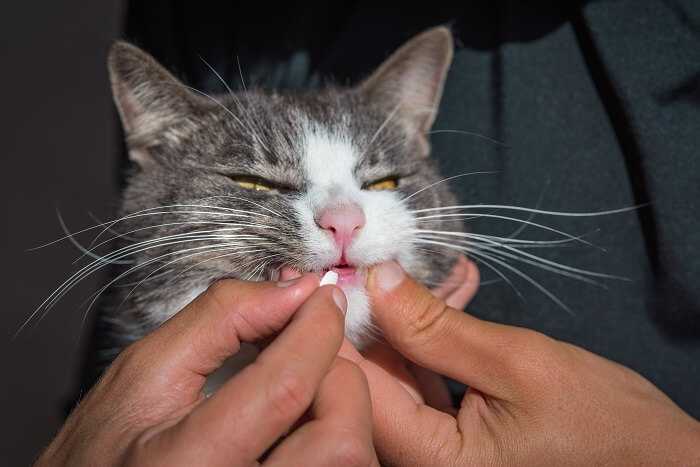
Within the last couple of years, gabapentin has become a controlled, scheduled substance in some parts of the United States and Europe.
In the United States, it is a Schedule V substance in AL, KY, MI, ND, TN, VA, and WV. There are several other additional states where it is not officially scheduled, but is subject to additional monitoring procedures when prescribed.
In Europe, it is classified as a Class C controlled drug in the United Kingdom.
Depending on your location, because of restrictions imposed by controlled status, your veterinarian may not be able to prescribe gabapentin for your kitty without an examination, and recheck exams may be needed for refills. An exception may include prescribing it in advance to help with sedation for an exam, but a telemedicine consult may still be required.
You may also find that because of the additional record-keeping and restrictions, that your vet office may not carry gabapentin in locations where it is controlled, and may alternatively provide a prescription to pick it up at a local pharmacy, instead of at the office itself.
In Summary
Gabapentin is a commonly-prescribed medication for cats, used most often for chronic pain conditions, and as a pre-medication to relieve stress or anxiety before veterinary exams or travel.
Also Read: Cat Separation Anxiety: Causes, Symptoms, And Treatment
It is typically very safe to use when following dosing instructions by a veterinarian. If your feline friend is on gabapentin and you have questions about dosage or changes, it’s very important to call your vet’s office for the best recommendations catered to your kitty.
Drug Dosing Disclaimer: We are only able to provide doses for medications that are FDA approved for use in cats and only as the label guidelines dictate. For medications that are used off-label we can only provide guidelines and safety information for use. Safe and appropriate dosing for off-label medications can only be determined by a primary care veterinarian.
We encourage you to work with your veterinarian to determine if a particular medication is appropriate for your cat. Changing or adjusting a dose for your cat on your own without consulting with a veterinarian can carry risk. We do not encourage use of medications prescribed for human use in pets without first consulting with a primary care veterinarian.
